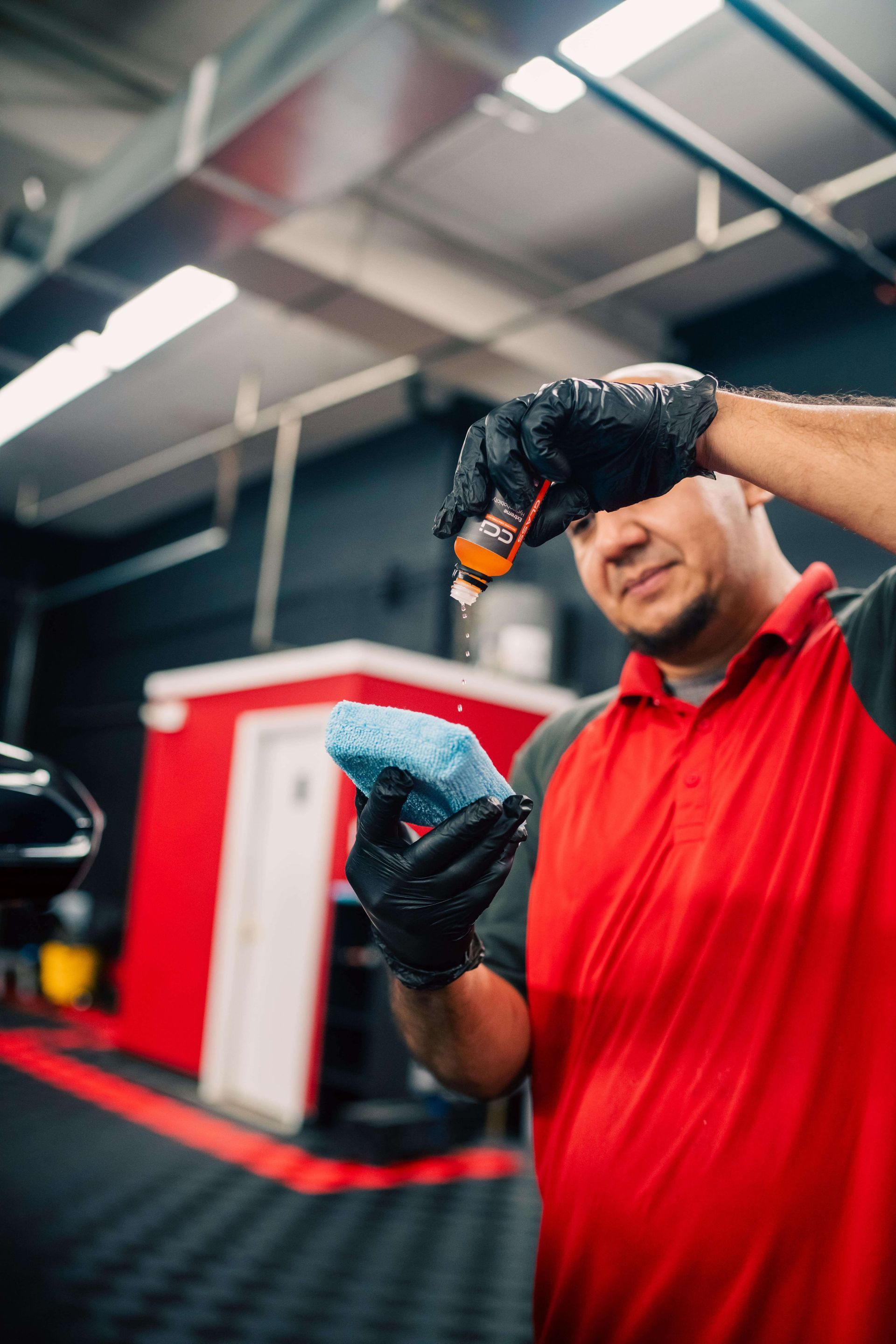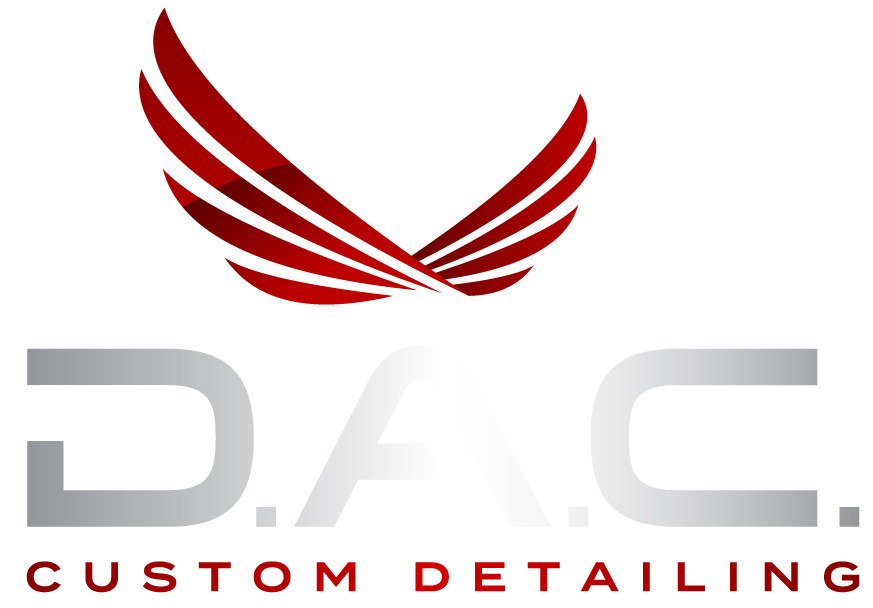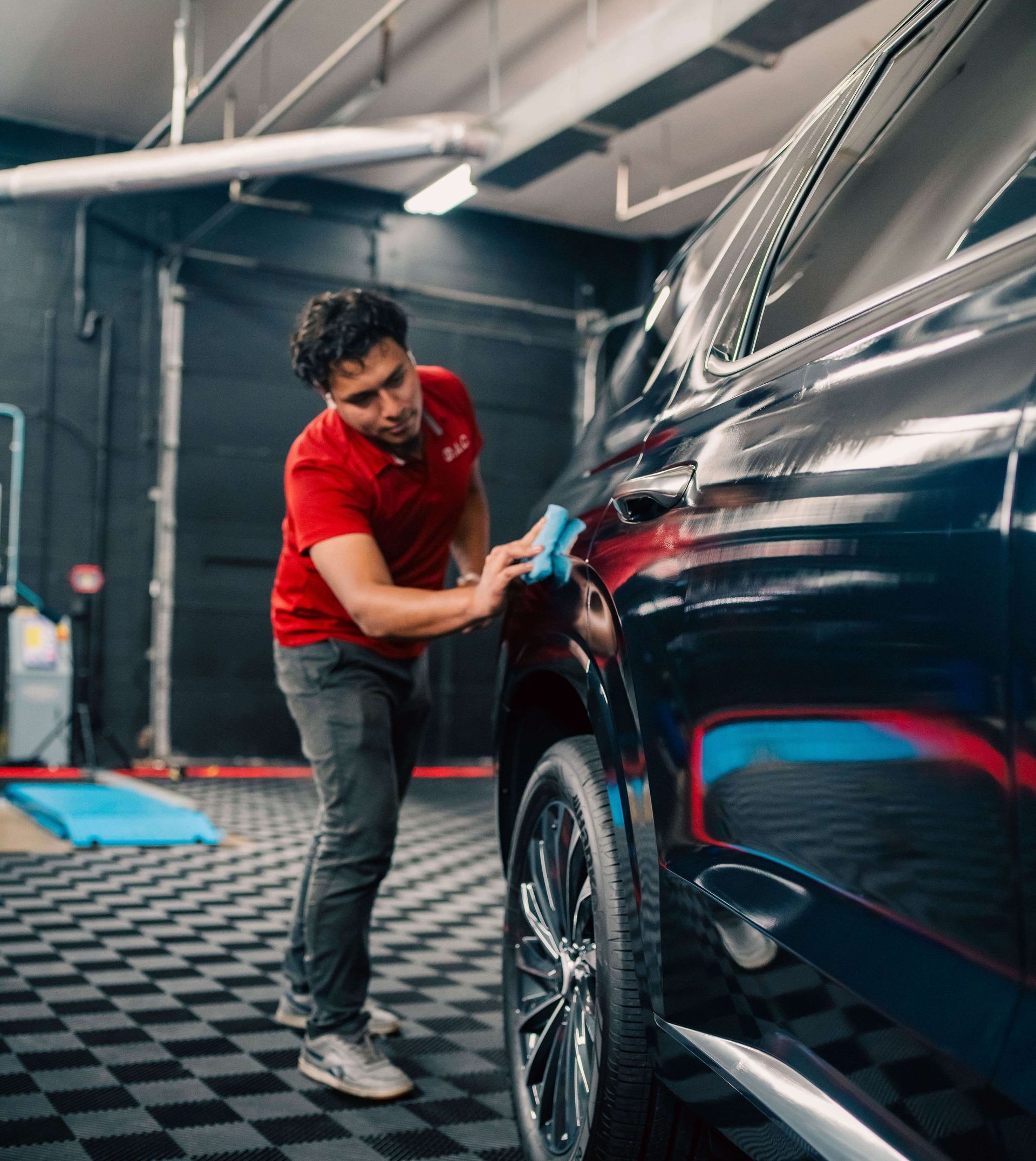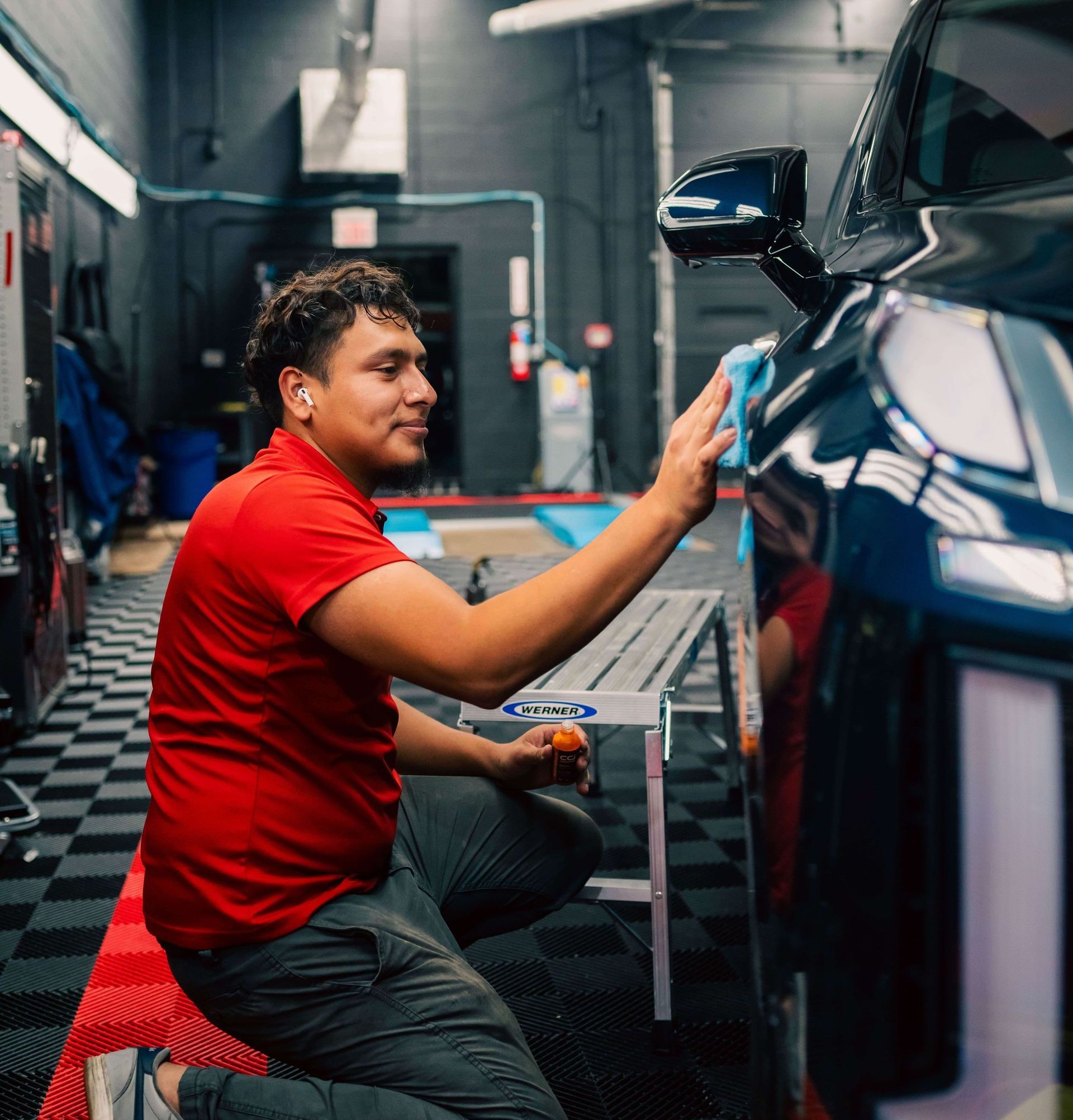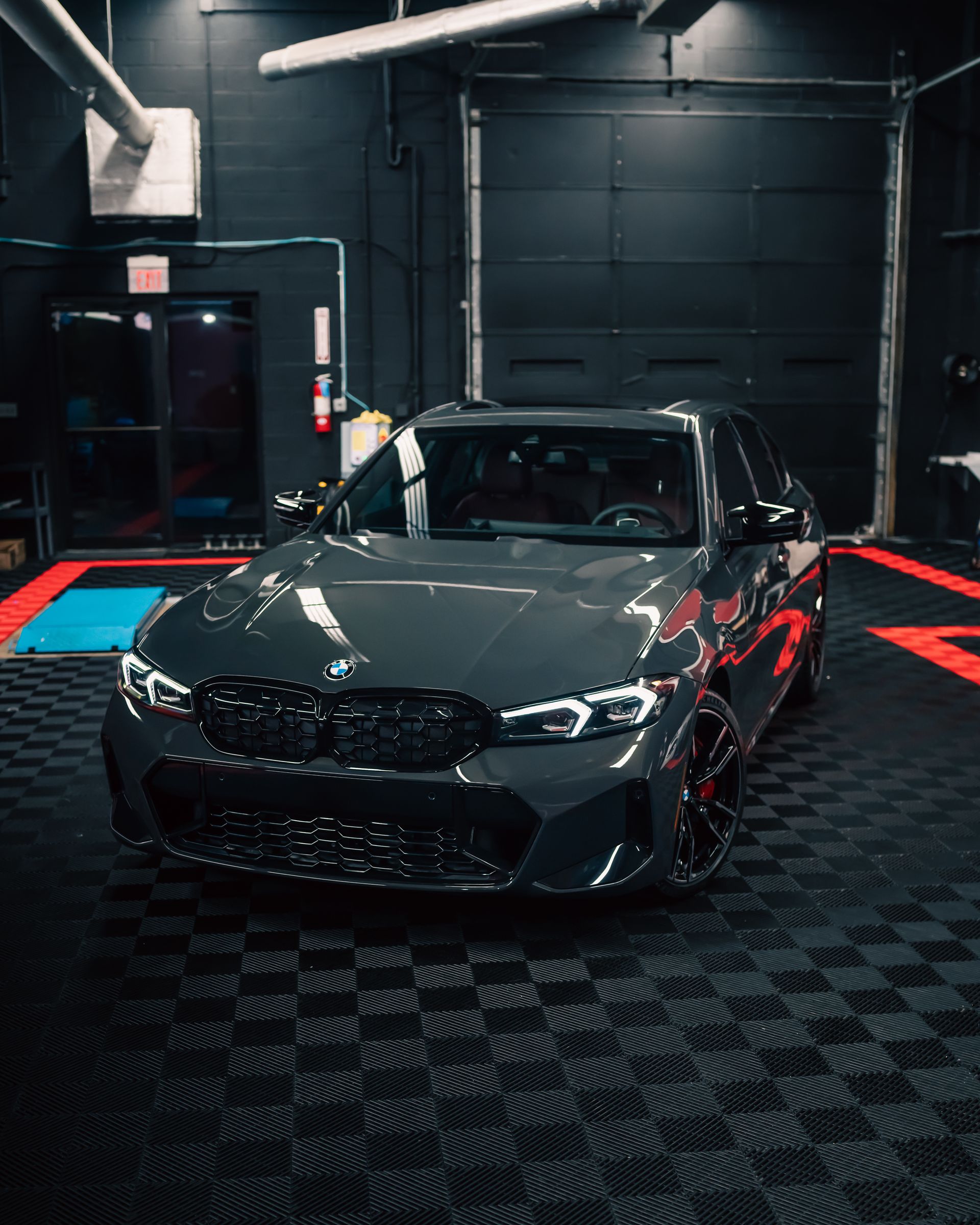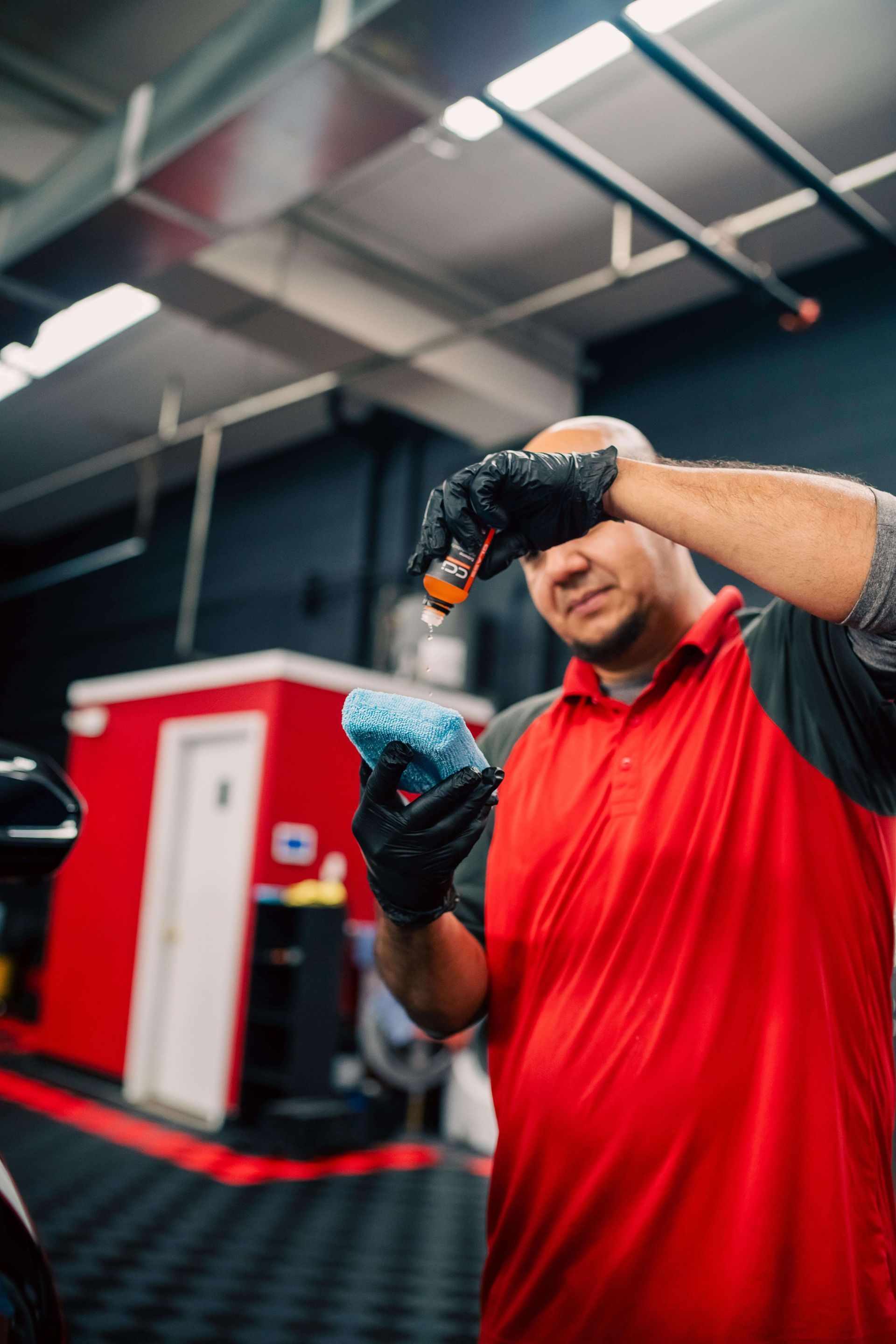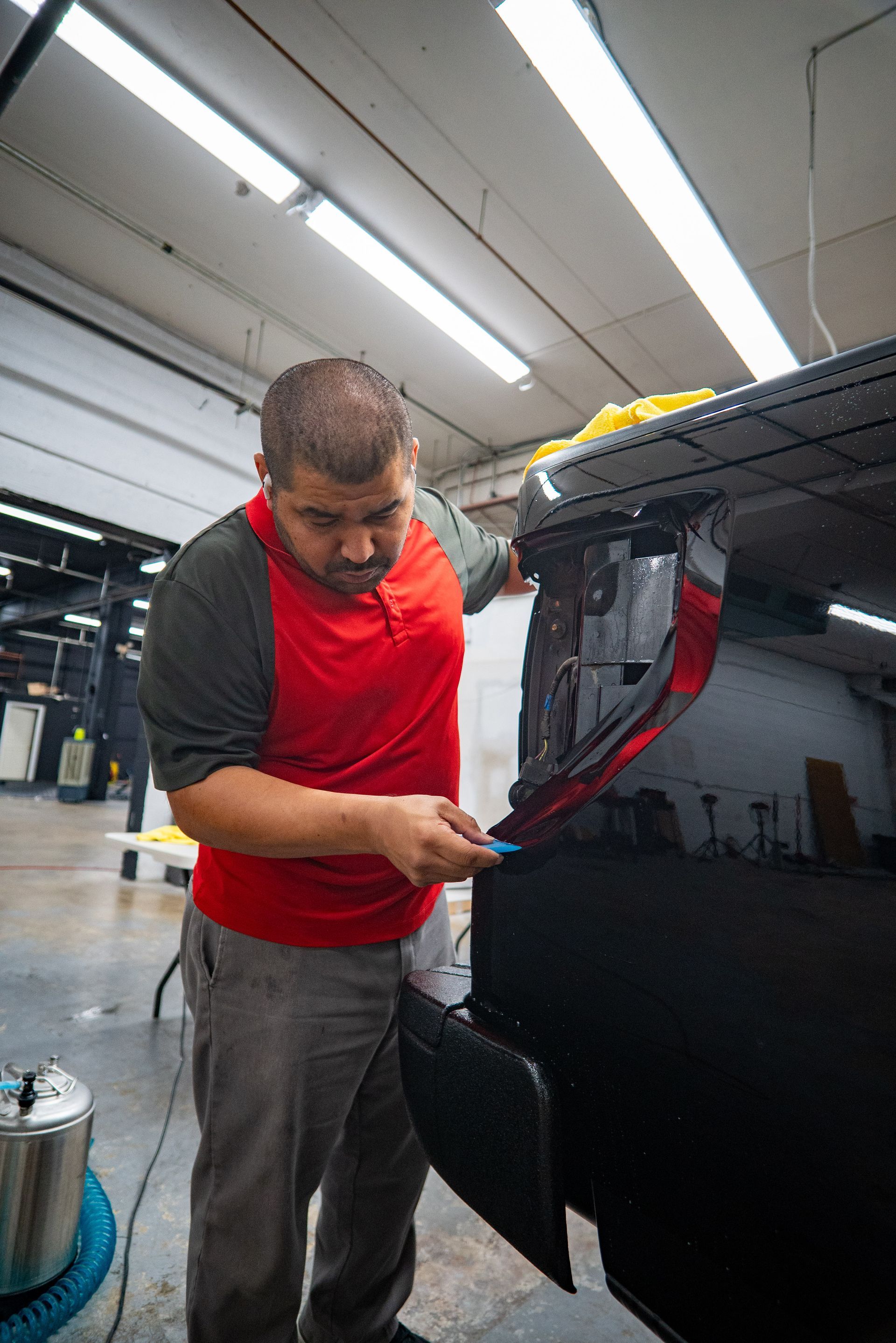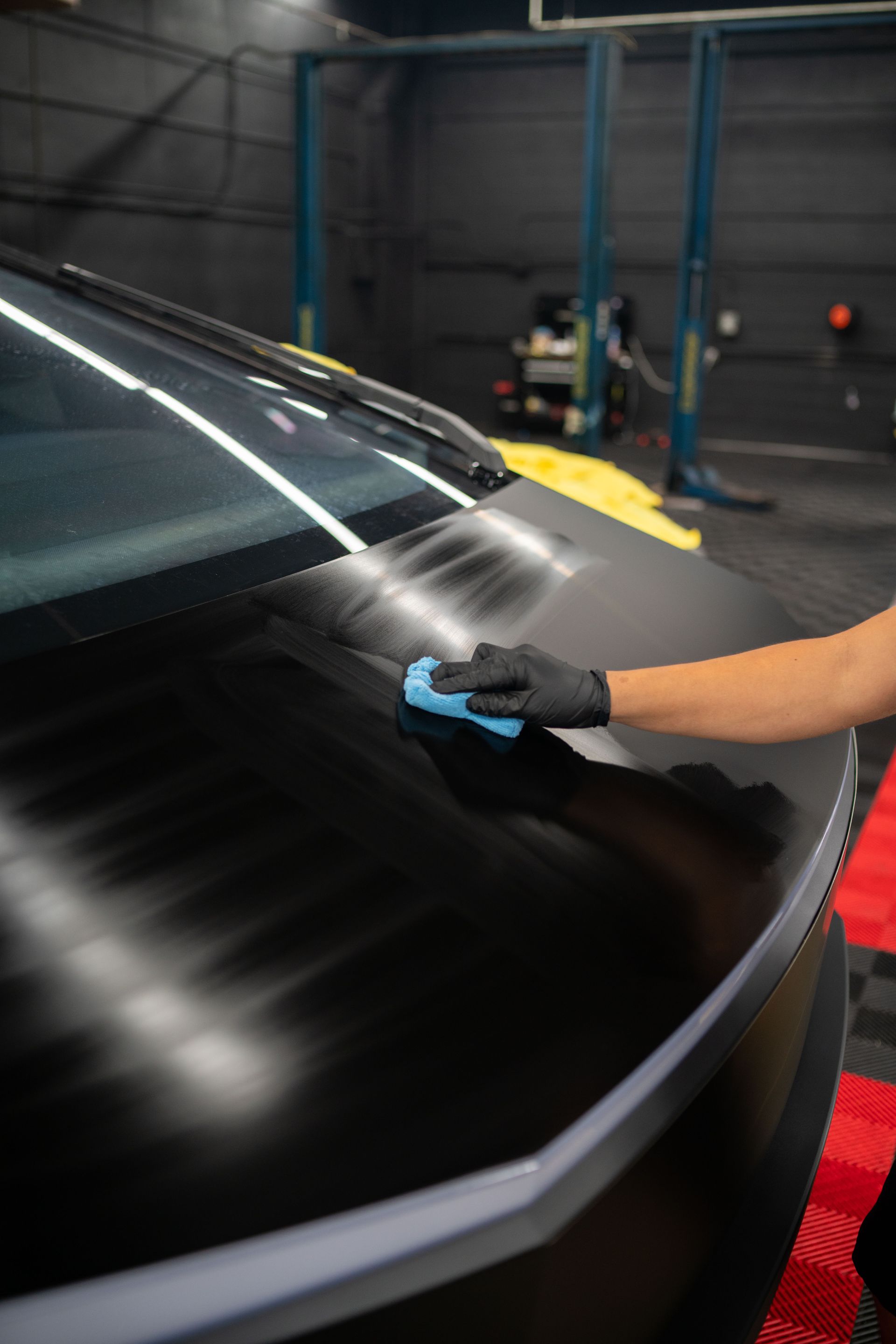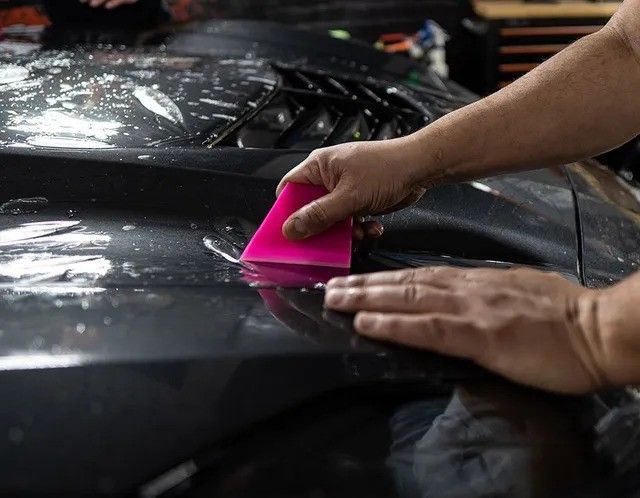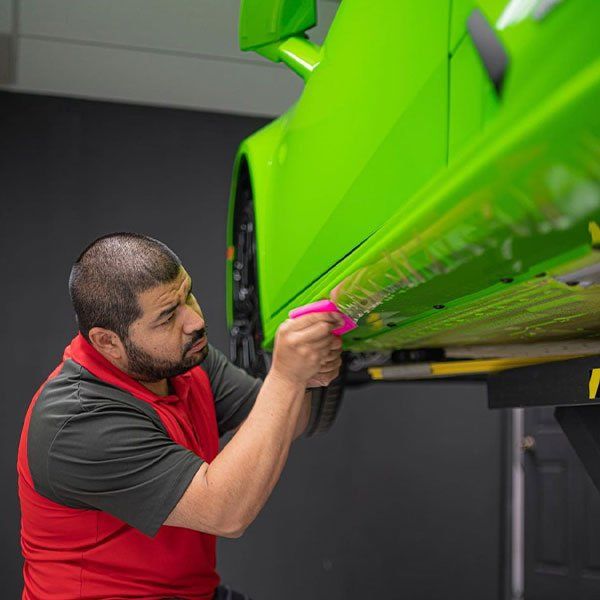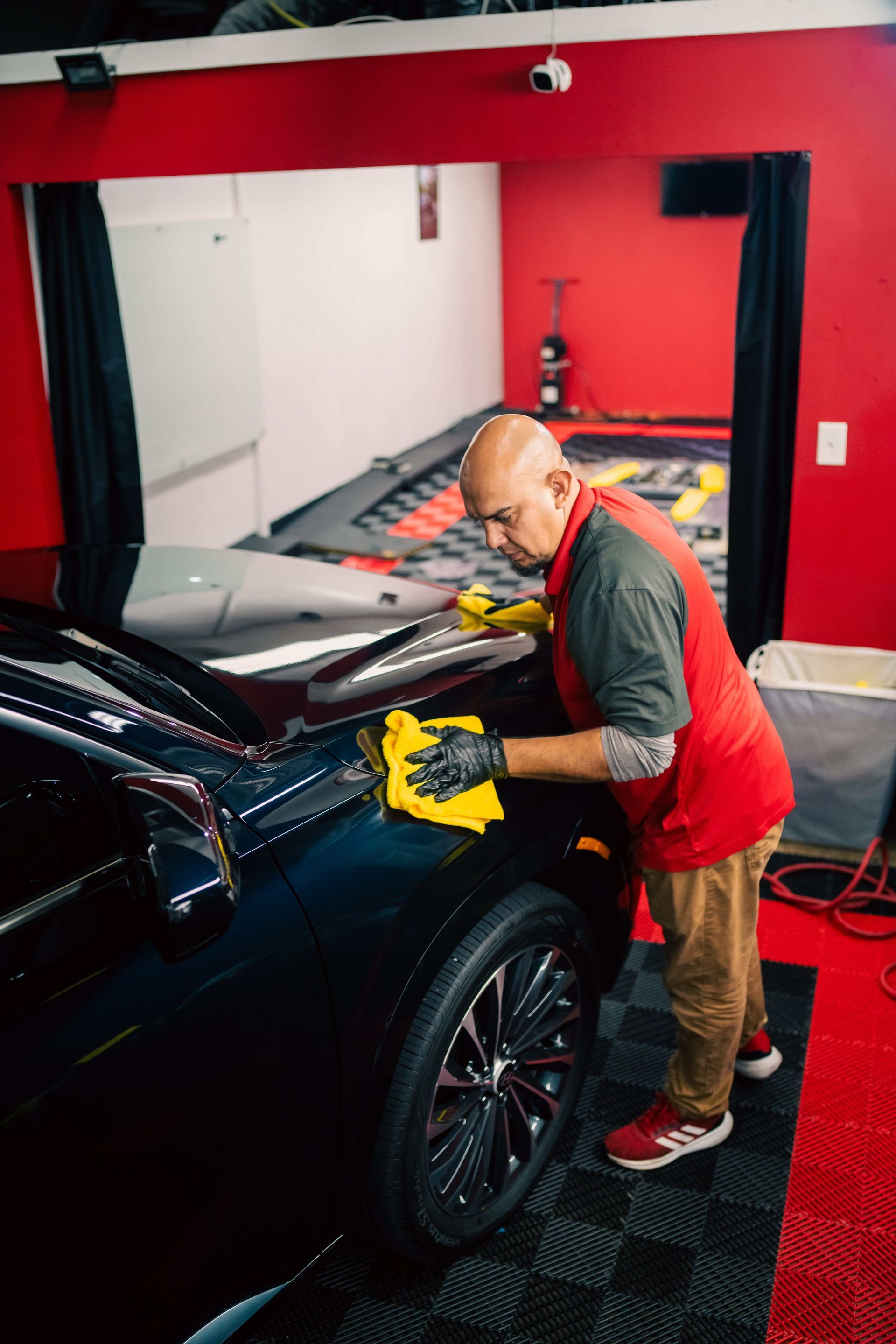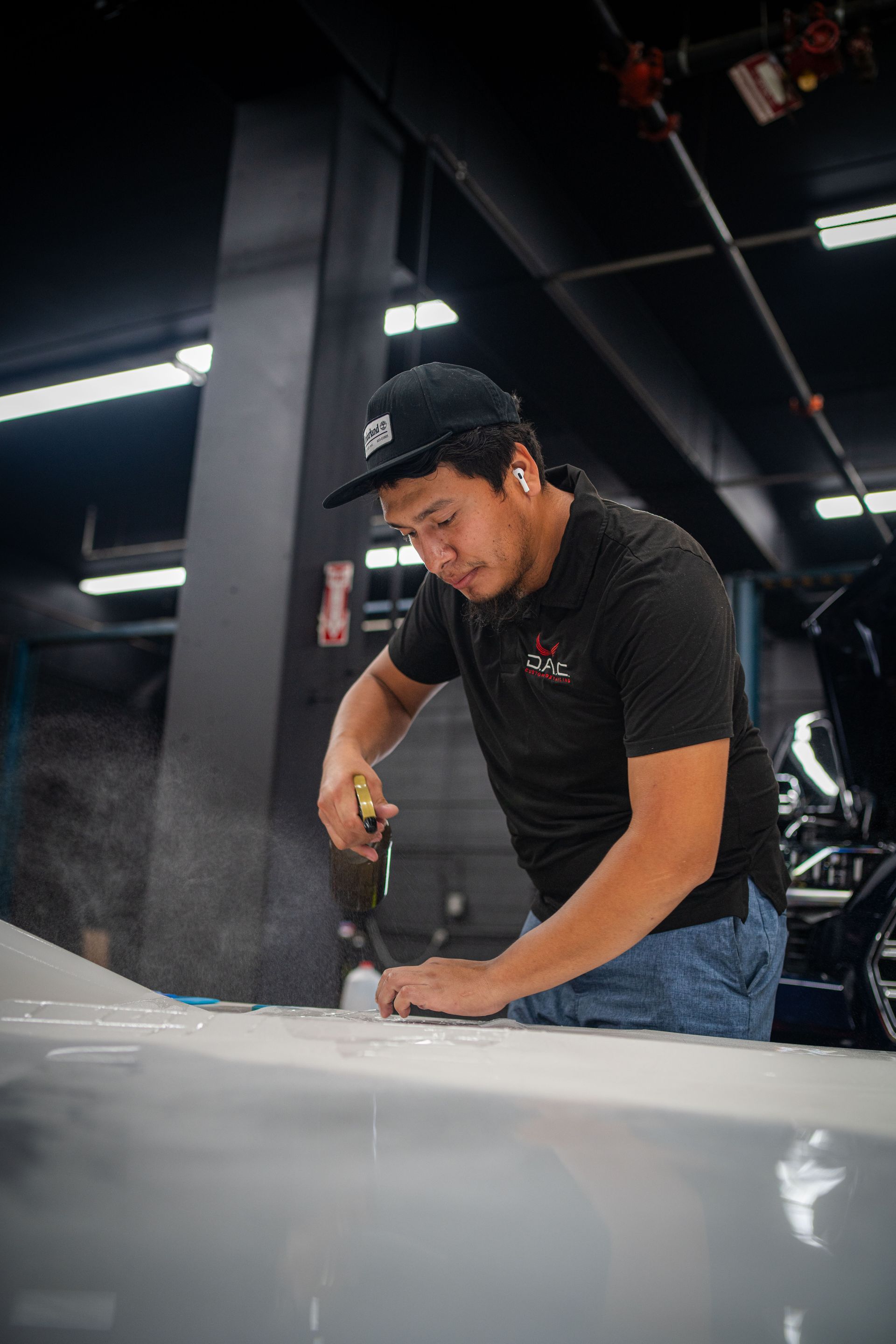REVIVE, PROTECT, MAINTAIN
When it comes to giving your car that stunning, protective ceramic coating, the secret ingredient isn’t just in the product you choose—it’s in how well you prepare the surface. Imagine trying to paint a wall without first cleaning off the dirt; the result can be messy and disappointing. Just like that wall, your vehicle needs careful attention to detail before applying a ceramic coat. From removing contaminants to ensuring a perfectly smooth finish, each step of surface preparation plays a crucial role in achieving durable results. Think of this process as setting up the stage for a performance—it’s all about creating the perfect backdrop for your vehicle to shine!
Surface preparation is critical for achieving optimal adhesion of ceramic coatings, as it removes contaminants that can compromise the bond between the paint and the coating, ensuring durability and longevity. Skipping this essential step can lead to issues such as uneven coverage or a reduced lifespan of the coating, ultimately compromising its protective qualities.
Why Surface Prep is Crucial for Ceramic Coating
Enhancing Adhesion
A properly prepped surface sets the stage for an effective ceramic coating application, maximizing adhesion and ensuring a secure bond with your vehicle’s paint. Picture this: if there are contaminants like dirt, wax, or even lingering polish residue on your car's surface, they act as invisible barriers that compromise the integrity of the bond. Such contaminants can lead to peeling or early degradation of the coating over time. Consider the way a cold drink slides through your fingers due to condensation on the glass—the same principles apply here! Meticulous preparation can increase adhesion strength. It's like laying down a solid foundation before constructing a building; the better the groundwork, the sturdier the structure!
Preventing Future Damage
Neglecting surface prep can have disastrous effects underneath your shiny new coating. Contaminants such as iron deposits from brake dust, tar from roads, or acidic tree sap can etch into your vehicle's paint if trapped beneath the ceramic layer. Over time, such contaminants can lead to corrosion and long-lasting damage that will be both costly and time-consuming to repair. By thoroughly cleaning every inch of your vehicle's exterior—removing these harmful substances—you’re not just giving it an attractive shine; you’re also extending its lifespan significantly. For instance, eliminating these potential threats upfront can save you from dealing with paint correction or refinishing in the future.
Essential Steps for Surface Preparation
- Initial Rinse: The preparation process begins with a thorough rinse using a pressure washer set between 1500 and 2500 PSI. This step removes loose dirt, dust, and road grime that could cause micro-damage during later stages. Think of it like rinsing off dishes before scrubbing—it loosens up stuck-on debris and makes the rest of the cleaning process far more effective. Skipping this step can lead to particles being dragged across the surface during washing, which may harm the paint's integrity.
- Washing: Once the loose dirt is rinsed away, the vehicle needs a proper wash using a pH-neutral car shampoo and a microfiber wash mitt. This stage is all about removing surface-level grime. The use of a pH-balanced soap ensures the paint remains unharmed, much like choosing a mild cleanser for sensitive skin. By taking your time and using gentle, overlapping motions, you provide your vehicle with a clean, residue-free surface that's safe for further treatments.
- Decontamination: After washing, decontamination using an iron remover is a critical step to dissolve embedded contaminants like brake dust and industrial fallout. These iron particles can’t be removed through regular washing and, if left untreated, can oxidize and damage your clear coat. Iron removers chemically break down these deposits, often changing color on contact to indicate where contamination exists. This ensures the surface is chemically clean, improving the bonding performance of your future ceramic coating.
- Clay Bar Treatment: With contaminants broken down, it’s time to physically remove the remaining particles using a clay bar and lubricant. This treatment works by gently pulling embedded debris from the surface that iron remover may have missed. Think of it like exfoliating your skin—it smooths out the rough texture and reveals a refined finish underneath. The objective is to achieve a perfectly smooth paint surface, which serves as an ideal foundation for subsequent polishing and coating processes.
- Polishing: Polishing addresses minor imperfections such as oxidation, etching, and hazing, while enhancing gloss and clarity. Using a dual-action polisher and the right polishing compound, you can correct small flaws and create a uniform finish. This stage is crucial not just for visual enhancement but also for maximizing the surface’s ability to bond with a ceramic coating. It’s the final touch in achieving a truly pristine surface that’s ready for long-term protection.
With every step, you’re not just cleaning your vehicle—you’re engineering the ideal conditions for ceramic coating success. Achieving superior bonding, achieving longer-lasting results, and achieving a visually stunning finish are all possible with proper preparation.
Cleaning and Decontamination Process
The cleaning process serves as a foundation for the exceptional outcomes that ceramic coatings can provide. By meticulously clearing away impurities, you're essentially setting up a blank canvas.
- pH-Neutral Car Wash Soap: Don’t underestimate the power of a quality pH-neutral car soap mixed with water—typically at a 1:10 ratio. This soap serves three major purposes: it breaks down stubborn oils, loosens additional dirt particles, and initiates the separation of contaminants from the paint surface itself. When you use a soft microfiber wash mitt, it gently glides over the surface, providing both thorough cleaning and an added layer of protection. It’s during this stage that you truly appreciate how proper preparation leads to a visually appealing finish.
- Clay Bar Treatment: This step eliminates embedded impurities with remarkable efficacy. By using a clay bar lubricated with a specific detailing spray, you'll want to employ gentle back-and-forth motions across each section of your vehicle. Typically, this method removes particles as small as 0.5 microns deep, significantly enhancing the surface's smoothness. If you've never felt the inviting feel of freshly clayed paint beneath your fingertips, you're in for a delightful experience! With the surface clean and smooth, we must ensure every trace of oils and residues is eliminated before proceeding.
- Isopropyl Alcohol Wipe: Why is an Isopropyl alcohol wipe necessary? Wiping down with a 50% isopropyl solution ensures that any residual oils or cleaning products are vanquished from the surface—important because even tiny residues can jeopardize adhesion when you apply that shiny ceramic coating. Finally, don’t overlook drying; use clean microfiber towels to eliminate excess moisture entirely. Ensuring no water spots remain is critical because they can create uneven surfaces that negatively affect adhesion.
Polishing and Imperfection Removal
Polishing is a transformative step in the process of preparing your car for ceramic coatings. It not only eliminates defects and creates that coveted smooth, flawless surface everyone admires. Imagine running your hand over a freshly polished car; it feels like silk and gleams like a diamond. This is the beauty of polishing—it prepares the canvas for the protective layer you are about to apply.
Dual-Action Polisher Use
When it comes to removing surface imperfections, a dual-action (DA) polisher is an exceptional tool for both beginners and seasoned detailers. Unlike rotary polishers, which can create heat that risks damaging the paint, a DA polisher oscillates while spinning, providing an even application with less risk on the delicate surface of your car's paint. Many users find it easier to control, and after comparing results, countless DIY enthusiasts make the switch. It's important to note that choosing the right polishing product is just as vital as the machine itself. Investing time in selecting the appropriate polish will significantly enhance the results of your efforts. As you polish your vehicle's exterior, the importance of thorough preparation becomes increasingly clear, setting the stage for optimal, long-lasting adhesion of your ceramic coating.
Benefits of Thorough Surface Prep
A well-prepped surface serves as the bedrock for maximizing the advantages of ceramic coatings, making them not just protective layers but powerful enhancements to your vehicle's overall appearance. When you take the time to prepare your vehicle properly, you're investing in much more than just a shiny surface; you are significantly increasing the lifespan and performance of the coating itself.
- Improved Aesthetic Appeal: One of the most immediate and striking benefits of meticulous surface preparation is the improvement in aesthetic appeal. Properly prepped surfaces yield a showroom-quality finish that makes your car's paint appear glossier and more vibrant—statistics show an improved shine by up to 40%. This polished, clean appearance attracts attention and usually receives more compliments from onlookers. Moreover, vehicles that maintain this kind of pristine appearance often retain a higher resale value over time. Potential buyers are inherently drawn to well-maintained cars, which translates to a greater return on your investment in the long run.
- Enhanced Durability:
Beyond visual charm, thorough preparation significantly enhances durability. When you apply ceramic coatings over meticulously prepped surfaces, they bond more effectively, resulting in a longer-lasting layer of protection—sometimes lasting up to 30% longer compared to poorly prepared surfaces. This means fewer reapplications, ultimately giving you peace of mind knowing your car is protected against damaging elements like UV rays, dirt, road grime, and even chemical pollutants.
Avoiding Common Preparation Mistakes
It's crucial to understand that missing even a single step in the preparation process could compromise the entire ceramic coating. One of the first errors to watch out for is skipping the decontamination step. This often involves overlooking contaminants like tree sap or iron deposits, which, if sealed under the coating, can lead to unsightly imperfections and even damage over time. Make it a habit to thoroughly clean the surface before applying any coating by using specialized iron removers or clay bars. You’ll be thankful later when your coating adheres firmly and looks pristine. Another major misstep is using harsh chemicals during cleaning. While abrasive cleaners might seem like a shortcut, they can actually etch into the paint, leading to more harm than good. Instead, opt for pH-neutral car shampoos that get the job done without damaging your vehicle's finish. It’s all about preserving the integrity of the paint while achieving that squeaky-clean surface you aim for.
As you scrub and rinse, take a moment to reflect on whether you're rinsing thoroughly enough. That's where insufficient rinsing or drying comes into play—the residual soap left behind can create a barrier that disrupts adhesion. A good rule of thumb is to rinse until no suds remain visible, then follow up with a gentle drying method using microfiber towels. Once you've tackled cleaning and rinsing, there’s another critical step: polishing. Inadequate polishing can also spell disaster for your ceramic coating application. If you don’t remove enough imperfections from the surface, the coating will not lay smoothly—it may even amplify small flaws instead! So when you polish, ensure you've refined the paint sufficiently. Use a dual-action polisher thoughtfully; it allows you to achieve a perfect finish while enhancing adhesion. Awareness of these common mistakes transforms your preparation process into a more effective undertaking. Taking meticulous care in each step not only improves the final look but also enhances durability—a ceramic coating isn't just about temporary shine; it's an investment in long-term protection for your vehicle.
Professional Tips for Best Results
One of the most effective techniques professionals often highlight is using a clay bar. This tool is vital for removing contaminants that washing alone might miss. Tiny particles of dirt, grime, and environmental fallout adhere to your paint, compromising the integrity of the ceramic coating if left untreated. After washing and applying iron removers, gently gliding a clay bar across the surface reveals its magic—suddenly, your paint feels like glass. This extra effort elevates the attachment level between the vehicle's surface and the ceramic coating, resulting in better durability and an ultra-smooth finish.
Once you've completed this meticulous clay bar treatment, don’t overlook another crucial step: an IPA wipe. After polishing, utilize Isopropyl Alcohol (IPA) wipes to ensure any polished residues are thoroughly eliminated. Surfaces must be pristine before the application of ceramic coatings, as leftovers from polish can prevent proper bonding, ultimately decreasing the coating's longevity. Wiping down with IPA eliminates potential contaminants, thereby establishing a pristine surface for adhesion. The importance of this step cannot be understated; it sets the stage for an optimal bond between your newly polished car and the ceramic product you intend to apply.
Following professional advice and incorporating these clever techniques into your process not only ensures an attractive finish but also ensures a durable application that will withstand wear and tear. These insider tactics can significantly transform your auto detailing journey from mediocre results to showroom-quality outcomes. Achieving durable ceramic coatings requires dedication to surface preparation and attention to detail at every step. Implementing these professional tips can significantly enhance both aesthetics and durability.
Expert Ceramic Coating in Alexandria, VA
Give your vehicle the long-lasting protection it deserves with
professional
ceramic coating services from D.A.C. Custom Detailing in Alexandria, VA. Our coatings create a glossy, hydrophobic barrier that protects your paint from UV rays, harsh weather, and road contaminants while also simplifying future washes. Whether you're preserving a new car or refreshing an older one, our expert team delivers results that turn heads and stand the test of time.
Schedule your ceramic coating
appointment today and drive with confidence in every shine!
Share with friends
